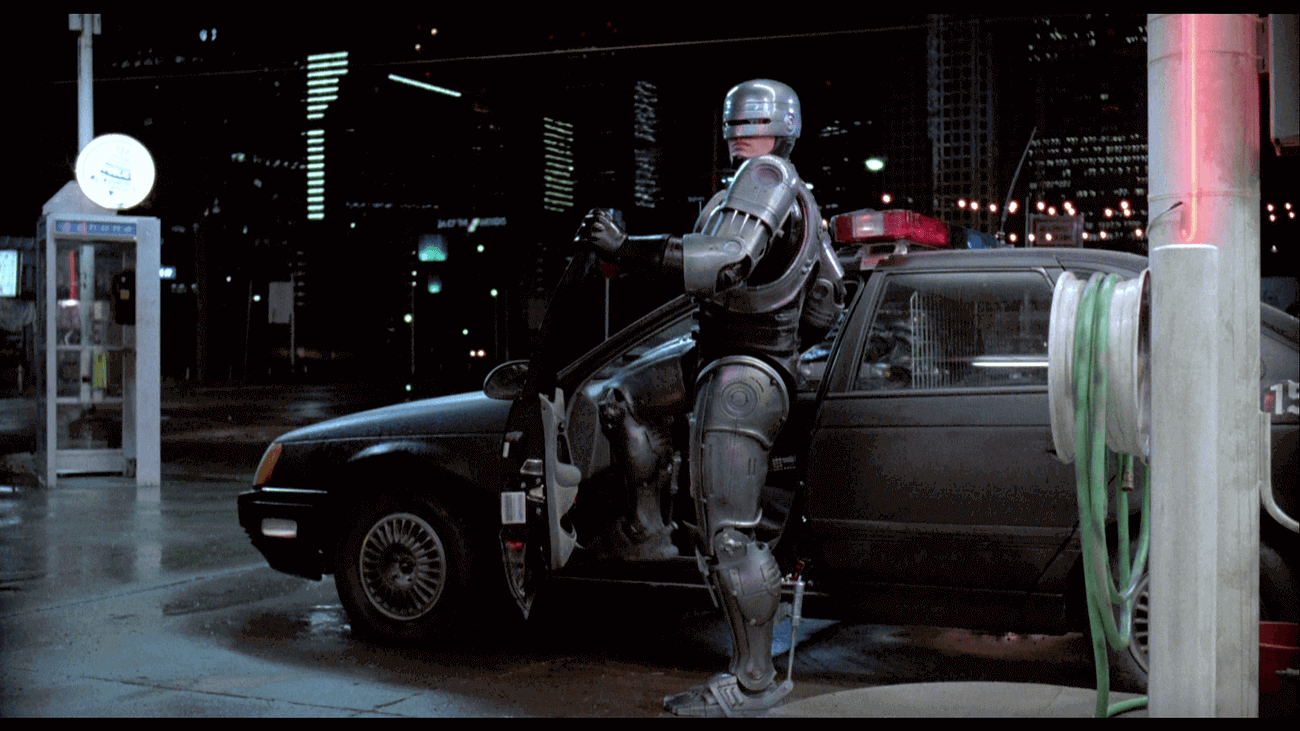Ford was on the brink of collapse. By the late 1970s, the company faced what some called a “financial disaster of epic proportions.” They were making cars that were out of step with the energy crisis. Cars that looked old-fashioned. Cars that were unreliable. Cars that weren’t selling.
“At the time, the American automobile was very conservative looking,” says Eric Taub, author of Taurus: The Making of the Car that Saved Ford. “They were huge. Land yachts, they were typically called. They all rode similarly as if you were in a living room on wheels. Many wouldn’t start every time, even when they were brand new.”

The time of gradual, modest change was gone. Ford had to do something really differently. The root of the problem wasn’t just the design of the cars, but how they were being designed, and built.
“One of the challenges for companies, generally,” says David Cole, former director of the Center For Automotive Research, “is you get so wedded to what you were, it is really hard to change.”
Follow the (new) leader
In the late 1970s, the vanguard of change in the car industry was Japan. Companies like Toyota, for example, were beginning to revolutionize the business. There was a dramatic improvement in quality. In Japan, but not at Ford, there were new aerodynamic designs, cars with rounded corners and no square edges. Smaller cars that were more fuel efficient.
In the face of this, Ford took a massive gamble and put three billion dollars toward a new project. Three billion – a massive amount of money at any time, and this was 1980. Suffice it to say, if this didn’t work out it would ruin the company.
President Don Peterson, Jack Telnack, the head of North American design, and chairman Phillip Caldwell drove what effectively amounts to a revolution at Ford. Japanese automakers were working with integrated teams, not individual departments, which allowed them to be more nimble and innovative. This was something that was decidedly not happening at Ford. In fact, it was the opposite of how the company had made cars for nearly a century. “The company,” says Taub, “especially in America, was really siloed. The engineers didn’t speak to the designers, and they didn’t speak to the marketers. Everybody was operating independently.”
Enter: The Ford Taurus project.
It had to be a blockbuster because the fate of the company – even the entire industry – was on its shoulders. “Everybody knew it had to be a breakthrough car,” says Telnack, “something really different, something dynamic.”
What went into the execution of the “Taurus blueprint” was a new level of manufacturing technology and a team approach. It was the most significant new assembly development since Henry Ford’s moving assembly line.

Jack Telnack was brought in to execute this plan and build the team. Telnack had been working at Ford’s European division as their chief designer. At this safe distance from the U.S. headquarters, in turns out, Telnack had had the freedom to design more aerodynamic cars, like the Ford Tempo. And his team had a different approach to working together.
“I really started to develop the team concept when I was with Ford of Europe,” says Telnack. “With manufacturing, with engineering, with finance, with marketing, with product planning. We brought all of these groups together and said, ‘Hey, we’re on a new project. We want to have a better working relationship with everyone.’ I think it was a matter of showing complete honesty and trust with each other throughout the corporation. If you have a problem, bring it out in front of everyone, let’s talk about it, let’s resolve it here.”
Telnack called it “Directed Autonomy.” He was trying to get away from the typical top-down type of management, where everybody was told exactly what to do. This was more of a bottom-up approach. And it laid the groundwork for much more creativity with the team, and the company.
A new approach to working together: Directed Autonomy
This approach required the right kind of team members. It needed people who were really unhappy with the status quo, and who liked doing things at the front edge rather than trailing behind. Turns out, these so-called rebels weren’t hard to find within Ford.
“There really was an atmosphere where people were so annoyed at the intransigence of most people,” says Taub, “the desire to simply raise the stock price, the lack of concern for the consumer and the customer. It was not that difficult to find people who couldn’t wait to get involved in some kind of project like this and were more than happy to work together.”
The team that forms to design and build the Taurus used this Directed Autonomy approach. Instead of having one person from, say, electrical engineering work on five different car lines, there were dedicated people who worked on the Taurus only. You could have a meeting with 25, 30 people and cover the whole product from manufacturing and engineering to finance. Everybody knew what was going on.
To understand how radical this was, you have to understand how cars at Ford had always been built. First, the designers would sketch out dozens of ideas and the best ones would be turned into full-size clay models. Once that was approved by the folks at the top, the plans would go to the engineering departments, who had to actually make and test all the thousands of bits that went into the car. Then, those specs would be sent over to manufacturing to prepare it all for the assembly line.
”We would wrap the plans for a new car around a rock and toss it over the wall to manufacturing,” said one Ford engineer. “If it didn’t come flying back within a few weeks, we assumed they could build it.”
Now, however, for the first time at Ford, everyone was in the same room. Directed Autonomy meant designers and engineers could map out ideas together, to make sure they worked and made sense. They could even loop in manufacturers, to make sure that what they were dreaming was actually possible. And it went both ways. For instance, assembly line workers asked the team to use the same size bolts for everything, so they wouldn’t have to constantly change their tools. A little thing that saved hours of work, frustration, and money.
“When the air conditioning ducts were designed, typically,” says Taub, “the engineers would decide to put them where they were easiest to be placed, not where they were the most effective. And then the designers would have to work around where the air conditioning ducts were and decide where to place all the other dials. Which is completely idiotic if you think about it, because it’s not responding to what the driver needs, it’s responding to what the engineer needs.”
But the most revolutionary aspect of the Taurus’ design was an oval, rounded shape to everything. All American cars at the time were very boxy. They were essentially “three box” vehicles – the way you might draw a car as a kid: three boxes with wheels. The Taurus, on the other hand, had lots of curved lines and flush headlamps. Which were unusual at the time, because before then most cars had round two or four headlamp systems embedded into the body. The team also reflected the oval Ford logo in the design of the vehicle itself.
Before this, for most of the programs and car lines that existed, the company would simply do facelifts. But, basically, the car was the same. The Taurus was an opportunity to work on a car from the ground up, everything new, including the engine, the transaxle, and more.
But every car has to have a grill, right?
Radical change requires a couple key elements. One is courage. Two is support from the top.
“If you look at most cars back then,” says Taub, “and even now, that front logo usually sits on a grill of some sort, which not only provides ventilation to the engine, it can give the car a distinctive look. Team Taurus, well, they went kind of nuts here. Their car didn’t have a grill. Believe it or not, that was one of the most controversial things they did.”
The pushback the team received came from all sides.
Telnack says, “The marketing people and the sales people said, ‘Well, you have to have a grill. Every car out there has a grill.’ And we said, ‘No, not this car. This is a whole new look. We don’t need a grill in this car.’”
It might not seem so radical after the fact. But this was a huge deal that made a lot of people at Ford very nervous. You just didn’t build a car without a grill. It looked weird, so weird maybe people wouldn’t buy it. It was such a big deal, this one feature – the grill – went all the way to the top for approval.
“Bill Ford,” says Telnack, “was a vice president of the company and head of the design. He made the final decisions. It was up to him. They threw it into Bill’s lap and said, ‘Okay, Mr. Ford, you make the decision. Grill or no grill?’ He said, ‘I want the front end with no grill. The aerodynamic front end.’ I about ran over and wrapped my arms around him.”
In fact, that kind of support also came from CEO Philip Caldwell, who asked Telnack if he was sure he’d gone far enough. He wanted something really unique and wondered if they’d reached out far enough on this design. It was something that had never happened on any of the management teams that Telnack had worked for in the company – in the U.S. or anywhere else.
Now, though, the team had to make sure that what they were designing could be assembled without a lot of difficulty. And this is where the team made another important and innovative decision. They realized the best way to ensure that the car could be made without a lot of difficulty was to talk to the people who had to do that job.
The importance of psychological safety
Team Taurus began spending time on the assembly line with workers, going down the line, riding in the product with them and asking what changes they would like to see to make assembly easier. This collaboration with the manufacturers was supported by Ford at never-heard-of levels. In fact, production people on the factory floor were even encouraged to take their time and to stop the line if there were problems and report defects – without fear of retribution.
This represented not only a 180-degree turnaround in Ford corporate culture, but a powerful new guiding principle. At its essence, it was the psychological safety to speak your mind, and to feel empowered to do it. And it’s an essential component to concept of Directed Autonomy, which makes perfect sense. If you have all these folks, from different parts of Ford, working together for the first time, feeling a sense of creative freedom, that freedom needs to include safety in pointing out problems and concerns.
But there’s a cost to this: delay.
In the long term, the constructive feedback led to a better car. But in the short term, the delays were potentially disastrous for Ford.
Flash forward: January 5th, 1985. It’s the Los Angeles Auto Show, one of the biggest and most important auto shows in the country. But you know what’s not there? The Ford Taurus. The hope had been to debut the car, with sales beginning in early fall. But the car needed a few more weeks before it could be shown to the media. And then again, in the spring, when the Taurus was nearing completion, there was a new problem: the rear doors didn’t meet up with the rear fenders correctly. In the past, you see, in Ford’s more unreliable days, this was something that might’ve been downplayed. But the new team delayed production – again.
For every week that cars weren’t being made and the production plant was idle, Ford lost as much as 50 million dollars in potential sales.
Then, suddenly, there was new concern about the styling aspects. Were they too radical? That’s right, after years of development, and billions of dollars invested, some members of Ford’s upper management got worried the Taurus simply wouldn’t sell. “It took a lot of guts and a lot of a strength,” says Telnack, “to stick with the design and not change it. It would have been easy to massage the design and make it more normal, so more people in market research would understand it. But the problem was, it would be normalizing the design and then we would lose the original intent.”
It wasn’t just Ford’s future that was riding on the Taurus. If the car failed, and Ford went bankrupt, that could spell doom for the entire industry. Because automaking, then and now, represents more than 3 percent of the U.S. gross domestic product. It’s one of the biggest manufacturing sectors in the country.
So what happened when the Taurus finally went on sale?
It was a blockbuster hit. No one had seen it coming, but the car was just the right combination of innovative aerodynamic design, full size, and a great driving experience. It was immediately named Motor Trend’s Car of the Year for 1986. Which was huge for Ford because two of the last three Cars of the Year had been European. Not to mention that they beat out award-winning cars from Toyota, Honda, and Audi for the top spot. In fact, it was even selected to be the police car of the future:

But the Taurus’ success was about more than just saving Ford. The holistic design approach also changed the American auto industry. It became sort of the graduate engineering program for the rest of the business. “People need to work together,” says Taub. “Silos don’t work. Jealousy doesn’t work.”
The team at Ford managed to negate jealousy by building a space where you could leave your ego at the door. But the success of the Taurus doesn’t come without a warning. Radical changes can be difficult to sustain. If you don’t keep motivating the change or evaluating the way you work, the benefit that comes with change has an expiration date.












































